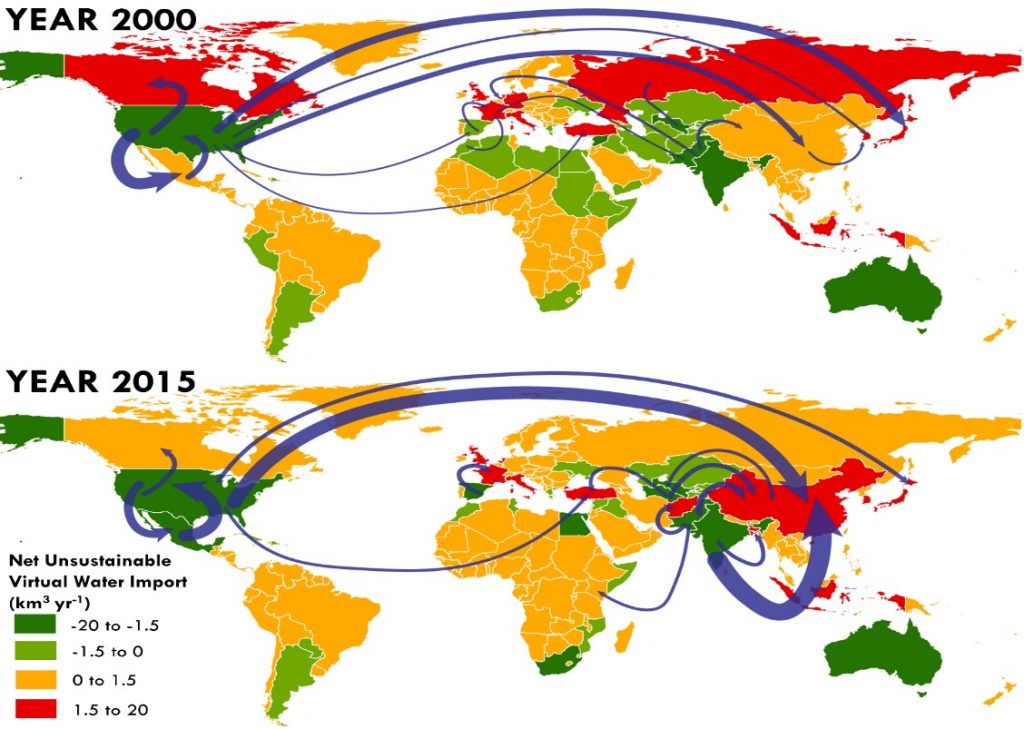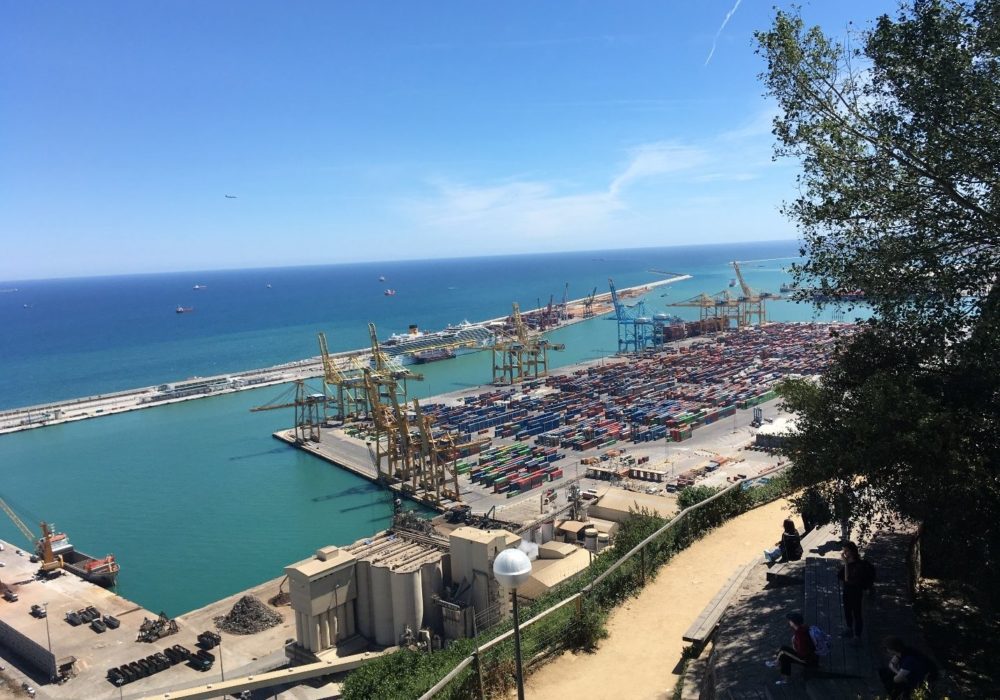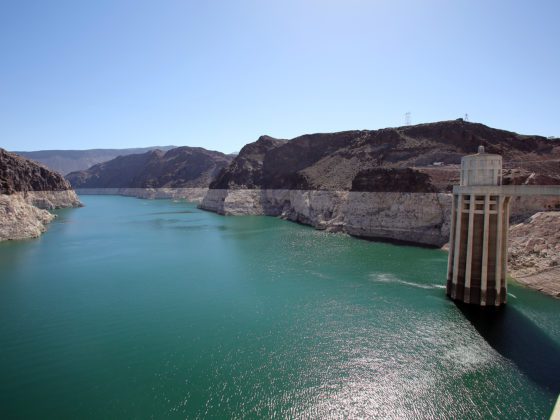Many rivers around the world are strongly depleted and don’t reach the ocean anymore. This is typically the result of over-exploitation by irrigated agriculture. We are so used to see this happening in rivers close to us such as the Colorado and the Rio Grande that these facts don’t even make the headlines of national newspapers anymore. Many millennials might even think that this is normal and has always been like this. But it has not. In fact, the boom of irrigation is a recent phenomenon that has emerged as a corollary of the industrial and green revolutions and the adoption of mechanization and other technology in agriculture. For decades stream ecologists have warned us that aquatic ecosystems are affected by high rates of biodiversity loss. Therefore it is crucial to maintain environmental flows, the minimum flows required to sustain aquatic habitat (Richter et al., 2012).
Who is responsible for the loss of environmental flows in over-depleted rivers? Although not directly involved in these water management decisions, consumers ought to have their fair share of responsibility because they ultimately drive the market pressures contributing to the sustained consumption patterns we have observed in the last few decades. These consumers, however, are not local citizens living in the watersheds directly affected by water over-consumption. On average, about one fourth of the food we eat is accessed by us through international trade. Because of the globalization of water through trade, a phenomenon also known as “virtual water trade”, consumers contribute to the use and overuse of water in areas far from where they live (Allan, 1998). This phenomenon was initially acclaimed as the solution to food insecurity, conflicts and human migration in overpopulated areas of the world, but it is also responsible for loss of resilience in the global food system and erodes the ethics of land and water stewardship. In fact, we tend to care more, feel more responsible for and ultimately become more engaged stewards of the land and water resources that are close to us, “in our backyard.” By disconnecting consumers from the natural resources they rely on, the globalization of water contributes to the over-exploitation of rivers such as the Colorado, the Nile, or the Murray-Darling, partly by distant actors who do not directly suffer the environmental consequences of their decisions.
In a recent study, Rosa et al. (2019) call this phenomenon “unsustainable virtual water trade” and reconstruct its global patterns (see Figure below). They found that, while Brazil and Argentina are major virtual water exporters, their exports do not contribute to unsustainable virtual water trade because these regions are not severely affected by water stress and irrigation does not cause a major loss of environmental flows therein. Conversely, the export of US grains to Mexico, China, or the Middle East significantly contribute to the loss of environmental flows (Rosa et al., 2019) or the depletion of groundwater resources (Marston et al., 2015). While 52% of global irrigation is unsustainable (569 km3 y-1), 15% of it is to sustain production of products for international exports (i.e., unsustainable virtual water trade), with an 18% increase from 2000 to 2015.
In India, China, Pakistan, and the USA agricultural production relies on unsustainable water use for irrigation. In India, Pakistan and the USA a share of that production is for export to other countries, including China. The crops contributing the most to unsustainable virtual water trade are cotton (33% of global unsustainable virtual water traded), rice (15%), fruits and vegetables (20%), and wheat (7%).

Unsustainable water consumption embodied in the international trade of agricultural commodities (after Rosa et al, 2019). Net exporters (in light and dark green) and net importers (in orange and red) of unsustainable water consumption, which is the fraction of the embodied water that is consumed at the expenses of environmental flows and groundwater stocks. Arrow sizes are proportional to the magnitude of the major unsustainable virtual water flows.
Paolo D’Odorico is a hydrologist and the Chair of Environmental Sciences at UC Berkeley.
References
Allan, J. A. (1998). Virtual water: A strategic resource. Ground Water, 36(4), 545–547. https://doi.org/10.1111/j.1745-6584.1998.tb02825.x
Marston L, Konar M, Cai Xand Troy T J 2015 Virtual groundwater transfers from overexploited aquifers in the United States Proc. Natl Acad. Sci. 112 8561–6. https://doi.org/10.1073/pnas.1500457112
Richter, B.D., Davis, M.M., Apse, C. and Konrad, C., (2012). A presumptive standard for environmental flow protection. River Research and Applications, 28(8), pp.1312-1321
Rosa, L., D. Chiarelli, C. Tu, M.C. Rulli, and P. D’Odorico, (2019). Global unsustainable virtual water flows in agricultural trade, Environm. Res. Lett., 14, 114001. https://iopscience.iop.org/article/10.1088/1748-9326/ab4bfc





